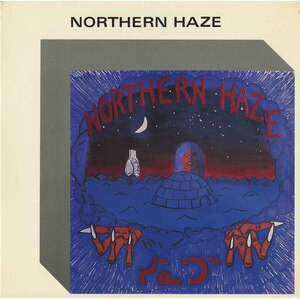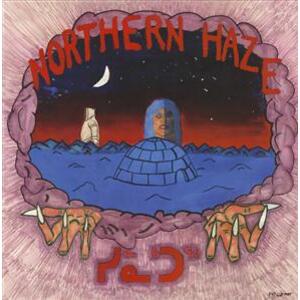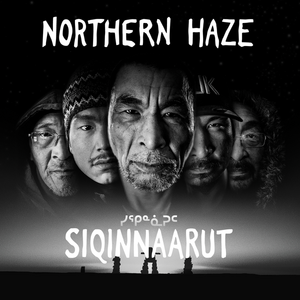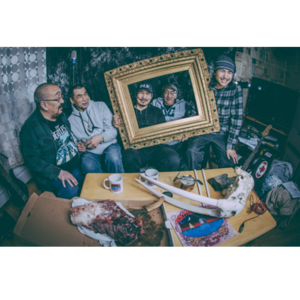Northern Haze
Websites:
No
Origin:
Igloolik, Nunavut, 🇨🇦
Biography:
Northern Haze’s story begins in the early seventies in Igloolik, Nunavut, a remote hamlet where a group of Inuit teenagers started out playing on homemade guitars and a plastic Disney drum set. Drawn to the sounds of Hendrix, Pink Floyd, and Led Zeppelin, they began merging those rock influences with traditional Inuit songs and stories, forging a sound that was as raw as it was original. In 1985, with help from CBC’s Northern Service, they recorded their first album, sung entirely in Inuktitut. Pressed in a run of just 500 copies, it became both the first Indigenous-language rock album in North America and one of the rarest documents of Canadian rock history. Its blend of heavy riffs, “ayaya” vocal parts, and Inuit storytelling marked the arrival of something truly unique, a voice from the Arctic unlike anything heard before.
The band’s music quickly carried them south to major festivals such as Folk on the Rocks in Yellowknife and Expo ’86 in Vancouver, while they continued playing dances in isolated Northern communities. But with success came hardship. In 2007 they suffered a devastating double tragedy when bassist Elijah Kunnuk died of cancer and guitarist Kolitalik Inukshuk was murdered just days later. For a time, the band fell silent. James Ungalaq, John Inooya, and Naisana Qamaniq eventually found a way to continue, joined by James’s son Derek Aqqiaruq and Allan Kangok, the “young ones” who brought new energy to the group.
In 2012, Supreme Echo issued Sinnaktuq, a deluxe collection of recordings spanning from their 1985 sessions through 2002 and 2010. Remastered and complete with restored artwork, the album revealed to a wider audience the breadth of Northern Haze’s vision: from hard-driving heavy metal with new wave edges to slower, doom-tinged rock, always grounded in Inuktitut lyrics and Inuit identity. Paired with the documentary Northern Haze: Living the Dream, the reissue cemented their reputation as the Rock Shamans of the North, survivors whose music embodied both tradition and transformation.
Remarkably, thirty-three years after their debut, Northern Haze returned with a brand-new album, Siqinnaarut (“Return of the Sun”), released in 2018 on Nunavut’s first and only record label, Aakuluk Music. Recorded in a studio they built in Iqaluit in the depths of winter, Siqinnaarut is a powerful statement of renewal. Ten original songs span raw heavy rock, punk-inspired riffs, folk-inflected ballads, and tributes to fallen brothers, with Ungalaq’s voice carrying both the pain of loss and the resilience of survival. “Inuk,” the opening track, erupts with a scream and rails against colonialism, while “Angajusakuluk” offers an uplifting tribute to Elijah, its title meaning “older brother.” “Inuusivut II” closes the record by reconnecting with their earliest material, blending melancholy and energy in equal measure.
What makes Northern Haze extraordinary is not only their historical significance but their ability to create timeless, deeply human rock music from one of the most remote communities on earth. They play because it is in their blood, as much a part of life as hunting or storytelling, and in doing so they’ve carved out a sound that is wholly their own. From their homemade beginnings in Igloolik to their improbable second act more than three decades later, Northern Haze stand as a testament to endurance, creativity, and the transformative power of music in the North.
-Robert Williston
Original lineup (1985):
Kolitalik Inukshuk: lead guitar, vocals
James Ungalaq: rhythm guitar, vocals
Elijah Kunnuk: bass, vocals
John Inooya: drums
2018 incarnation (Siqinnaarut):
James Ungalaq: vocals, guitar
Naisana Qamaniq: guitar, vocals
John Inooya: drums
Derek Aqqiaruq: bass, vocals
Allan Kangok: guitar, keyboards




